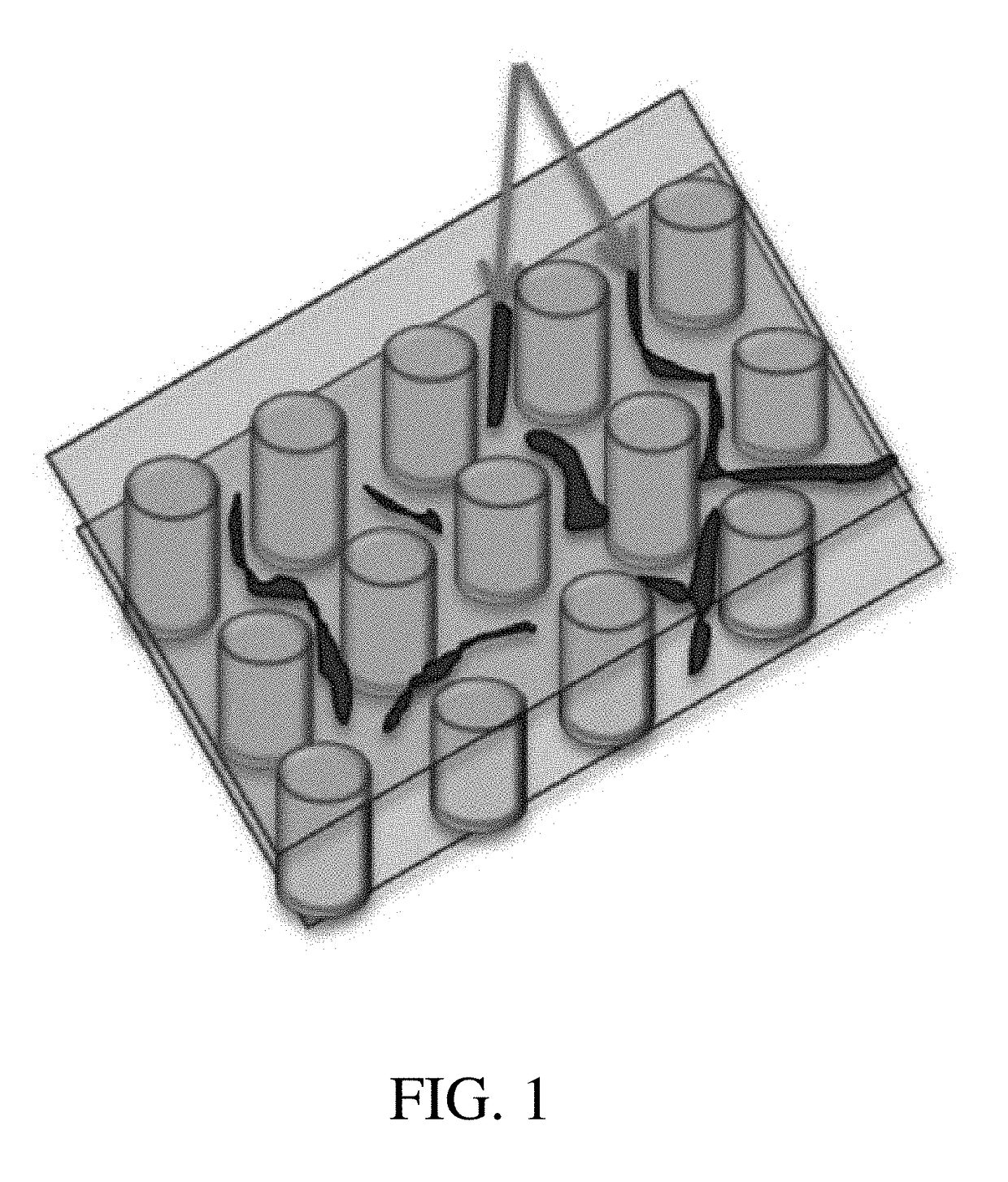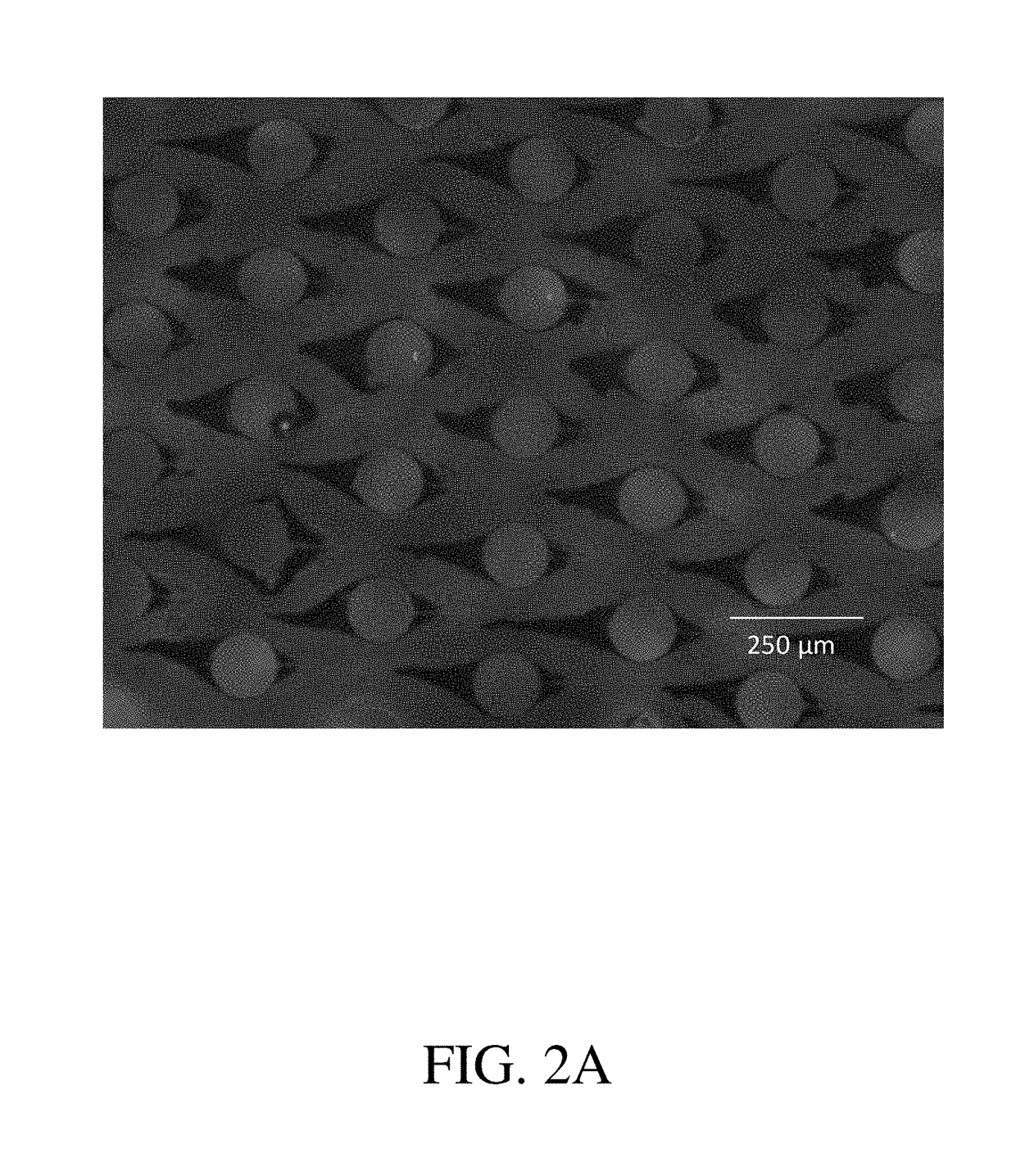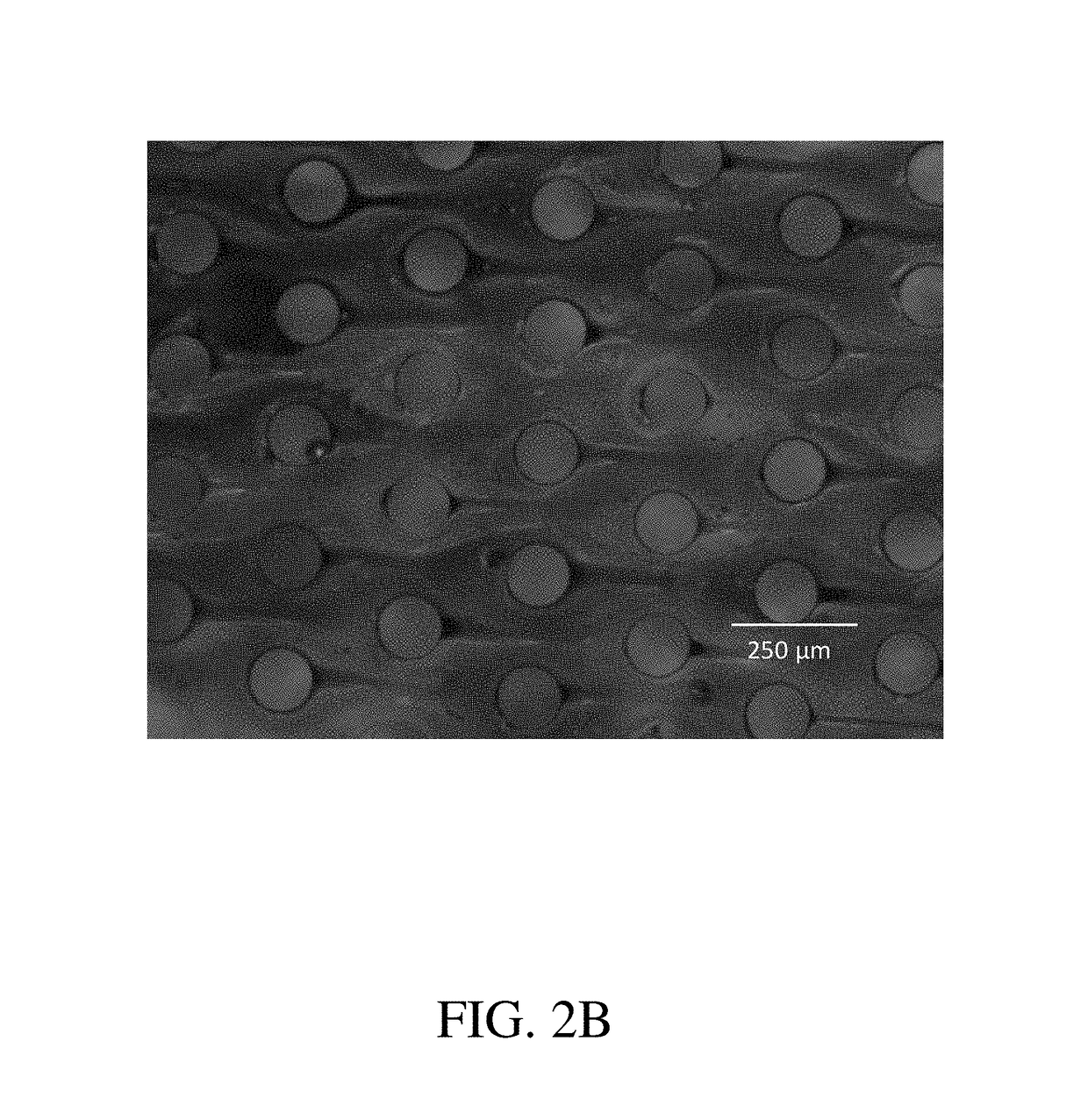Compositions comprising aromatic ester solvents for use in oil and/or gas wells and related methods
- Summary
- Abstract
- Description
- Claims
- Application Information
AI Technical Summary
Benefits of technology
Problems solved by technology
Method used
Image
Examples
example 1
[0202]The following non-limiting example describes a process for the selection of a suitable emulsion or microemulsion composition for asphaltene removal using microfluidic devices. This set of experiments allowed for first the observation of asphaltene deposition in a porous medium using a microfluidic device, and second the visualization of the wash-off of the asphaltenes using different emulsion or microemulsion compositions and their equivalent surfactant packages (e.g., essentially identical compositions without solvent).
[0203]The microfluidic devices utilized in these experiments were glass and polymer devices in which fluid was made to flow through a model three-dimensional porous structure. The devices were made by etching or molding a pre-defined pattern of circular pillars and channels. FIG. 1 shows a schematic diagram showing asphaltene deposition on the surfaces of circular pillars in a microfluidic device, wherein the arrows indicate two representative asphaltene residu...
example 2
[0211]The following non-limiting example describes the results of microfluidics wash-off experiments like those in Example 1 that were performed in the current example to determine the effect of a microemulsion comprising d-limonene and methyl salicylate on asphaltene wash-off performance. A microemulsion was made in which the solvent portion contained a weight ratio of d-limonene to methyl salicylate of 3:7. This microemulsion was diluted to 2 gallons per thousand (gpt) in 2% KCl by weight of water for the wash-off experiments. To perform the testing, asphaltenes were precipitated into a microfluidic device using heptane as described in Example 1.
[0212]The asphaltene coverage before treatment with a microemulsion comprising d-limonene and methyl salicylate was compared to the asphaltene coverage after treatment. Asphaltene wash-off performance of the microemulsion comprising d-limonene and methyl salicylate was compared to that of an equivalent microemulsion without methyl salicyla...
PUM
 Login to View More
Login to View More Abstract
Description
Claims
Application Information
 Login to View More
Login to View More - R&D
- Intellectual Property
- Life Sciences
- Materials
- Tech Scout
- Unparalleled Data Quality
- Higher Quality Content
- 60% Fewer Hallucinations
Browse by: Latest US Patents, China's latest patents, Technical Efficacy Thesaurus, Application Domain, Technology Topic, Popular Technical Reports.
© 2025 PatSnap. All rights reserved.Legal|Privacy policy|Modern Slavery Act Transparency Statement|Sitemap|About US| Contact US: help@patsnap.com



